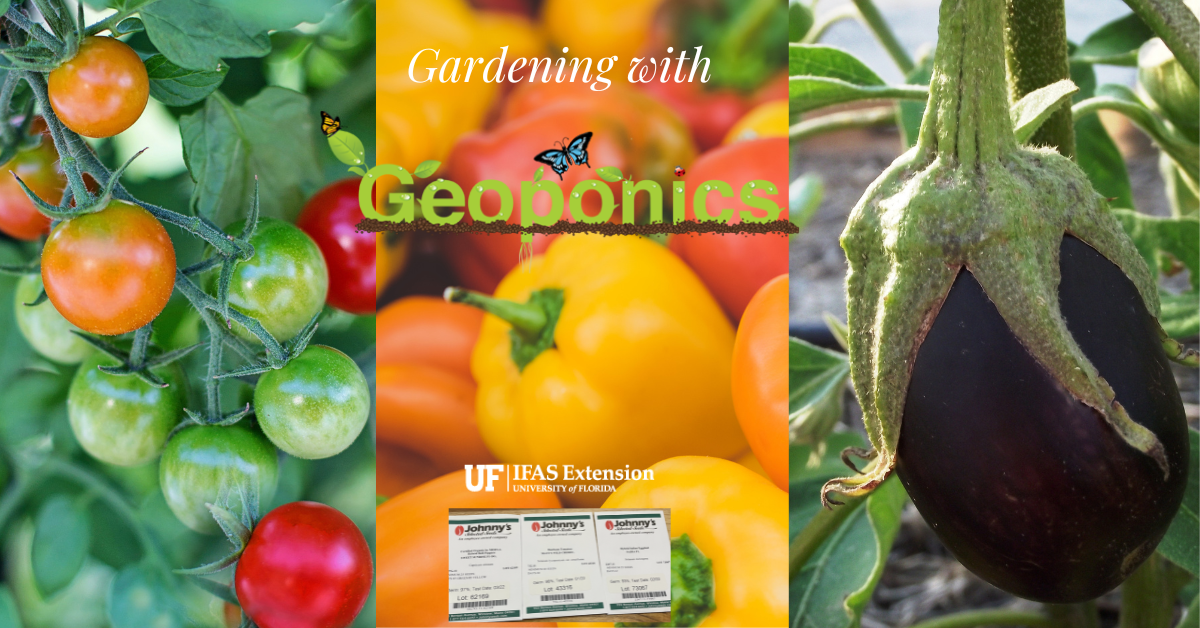Today, we got our Extension Office seeds.
When we learned that nearly 60 University of Florida Institute of Food and Agricultural Sciences extension offices across the state were offering seeds to promote community gardening, we were immediately excited to participate.
We hope you’ll get your seeds and follow along. We will share the growing process with you, each step of the way.
There are extension offices like this across the U.S. that offer similar ways to support growers– whether farmers, community gardeners, agricultural professionals or simply a home gardener.
Here is a link to find your closest Extension Office in any state across the U.S.
Now, in the meantime, we reveal the seeds we received. The preview image may have been a giveaway.
Next, we will embark on planting these seeds. As they grow, we will share tips to improve soil quality, water management and ways to increase yields, organically.
Extension Center Seeds: Three Plants Received
Our seed packets from UF/IFAS Collier County, as part of collaboration with the Florida Department of Agriculture and Consumer Services include three types of seeds from Johnny’s Seeds:
- Organic Hybrid Bell Peppers
- Wild Cherry Heirloom Tomatoes
- Hybrid Italian Eggplant
We looked into Johnny’s Selected Seeds and learned they are based in Maine. The owner started his career on an organic farm and then became committed to providing non GMO seeds.
Extension Office Seeds of Information
Along with the three seed packets, UF/IFAS, our local Extension Center, shared information and growing tips. Although in Florida we can grow year round, there are still best times to grow certain crops.
Here is some of what UF/IFAS shared thus far:
Getting Started: Planning Our Garden
So, we know the three plants we are growing. Since we are in Florida, we can grow anytime. Still, the optimal time to have planted these seeds would have been in February for yields now. Given that and other reasons, we are definitely going to grow these in containers.
Why Container Gardening?
Flexibility to Protect Plants
We are choosing container gardens in part because with South Florida heat and summer weather patterns, we can move the plants as needed. This way, we can shield them from sun, heavy rain and winds when needed. But also, give them the outdoor time they need.
Increased Controls
We can better optimize and control soil. And, to some degree, we can influence exposure to extreme weather conditions. We can hand-water, avoiding the cost of irrigation.
Minimize Pests
We can more easily minimize soil and garden pests. Doing this physically or mechanically will make it much easier to avoid chemical usage on our garden. This is ideal because even too much organic pesticide can be toxic, not only to us but if running off into our water.
We can use fertile soil and avoid putting anything into the ground to harm the sensitive waterways of our area.
Save Space
Whether you have a large yard or not, you may be able to follow along with just three pots. Keeping in mind, tomatoes and bell peppers may need stakes. Eggplant may need a trellis or other support.
Planning Our Containers
First, we are going to start creating seedlings. But meanwhile, we are going to plan our containers to make sure we have what we need for each crop we are growing.
Growing Eggplant in a Container
We are looking for a 5 gallon pot. Growing eggplant in containers requires about one foot of space per plant with up to three plants in a 20 inch container.
We plan to mix potting soil with our local sandy soil in a ratio of 2:1. We will have a tomato cage on hand to support the plant.
Growing Tomato in a Container
Container grown tomatoes like lots of space. We plan to get another five gallon pot or bucket for our tomato plants. We will use all potting soil. The more fertile soil for tomatoes, the better. Once the seedlings are established, we will add SoilPlex, FertaFlow and Carbotein.
FertaFlow is an organic, cold-pressed, whole fish fertilizer. This provides much more of the nutrition needed than a mere emulsion, as the cold processing and whole fish mean the protein and fish oils are still included, unlike in emulsions.
SoilPlex will provide humic and fulvic acid to increase nutrient uptake and improve soil quality.
Carbotein is made of vegetable extracts and increases budding and yields. You can purchase these OMRI listed products for organic growing and Carbotein on ShopGeoponics.com under Plant Nutrition & Fertility.
Growing Bell Peppers in a Container
We may be able to get away with a slightly smaller pot for the bell peppers, putting up to three plants in a 10-12 inch deep and wide pot. In time, we plan to use potting soil and to add SoilPlex once the seedling is established. Since we do not have compost ready at this time (just getting it established on a new property), so SoilPlex will be a great organic, OMRI listed alternative for providing the carbon rich soil we need plus humic and fulvic acids. This will increase water holding capacity, increase plant nutrient uptake and improve soil structure.
How Long Before Our UF/IFAS Garden Grows
First, we need to propagate these seeds into seedlings. Once the plants are established, we may have our vegetable and fruit in 60 to 90 days.
Sprouting: Germinating the Extension Office Seeds
We will likely start the tomatoes and the eggplants in a wet medium like a paper towel and then in tiny starter pots. We expect to see those seedlings in about 7 days, once we get started. The bell peppers may take a little longer. We won’t soak them in any way and we will definitely take advantage of the Florida heat to get them started as quickly as possible. They may be a little slower than the others. We’ll see.

